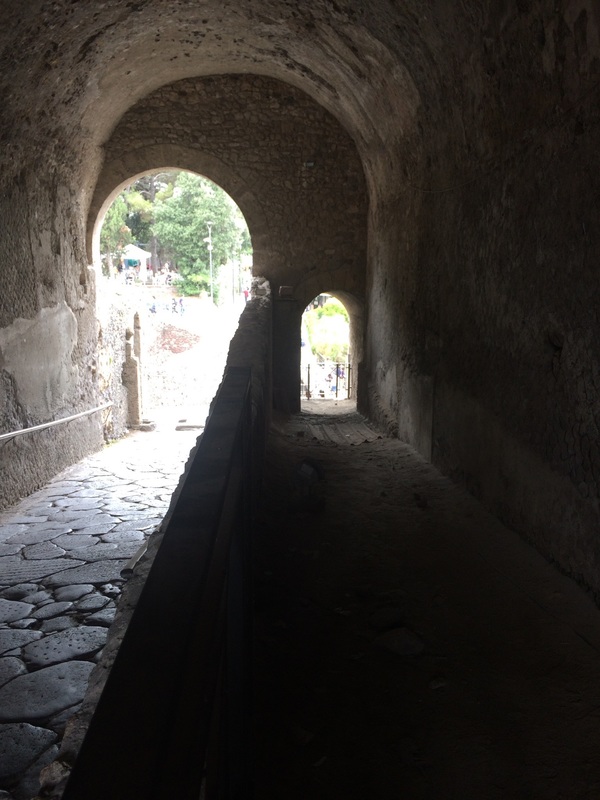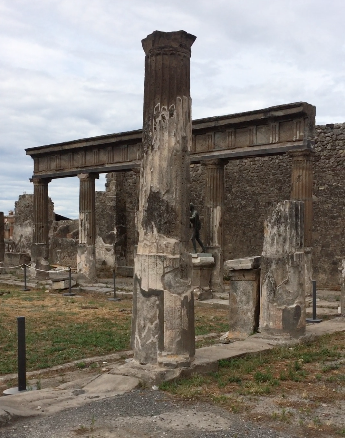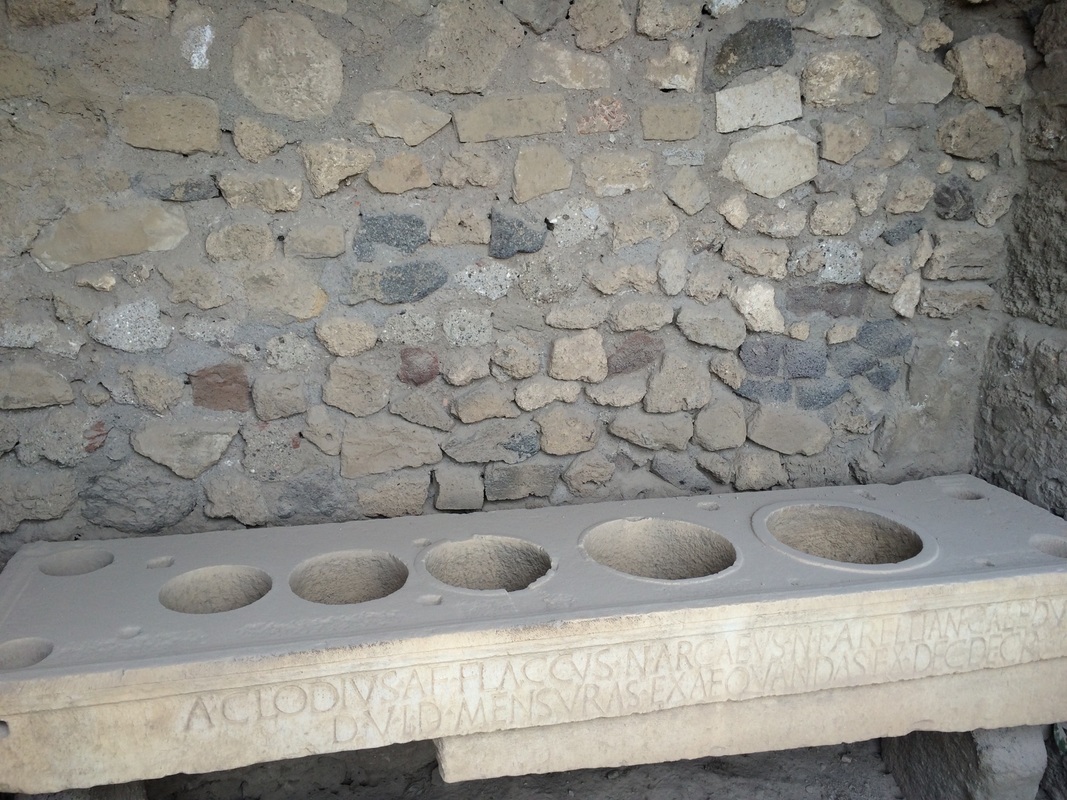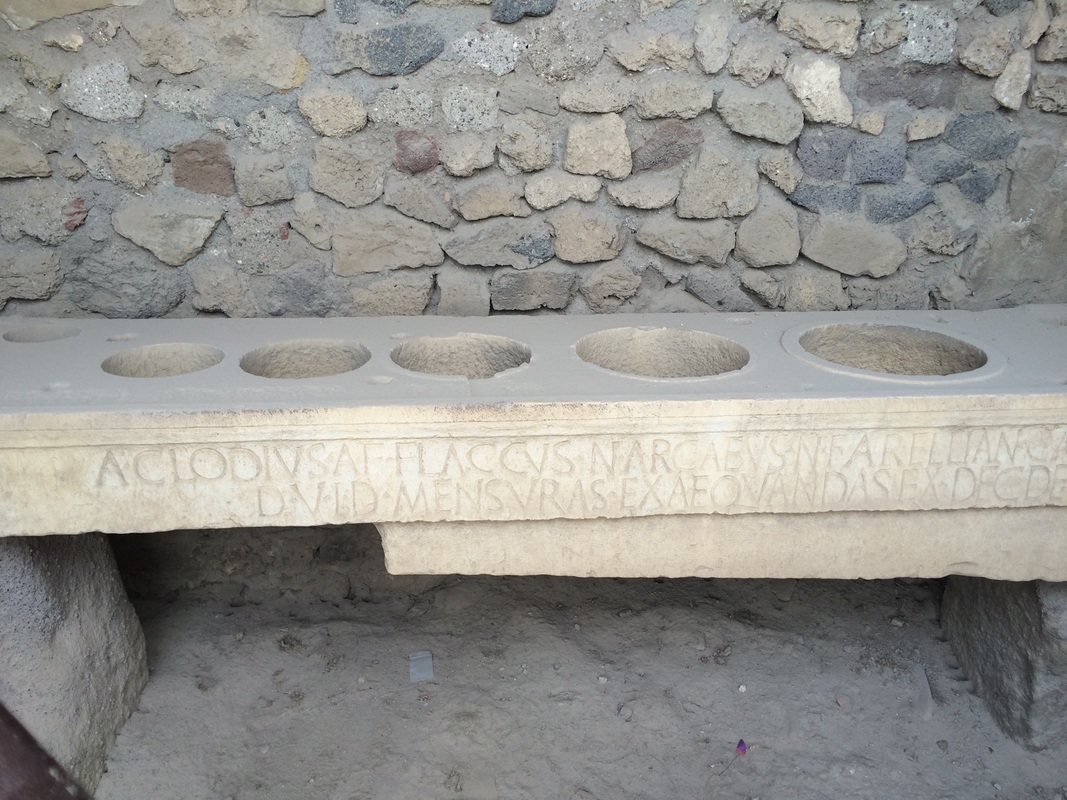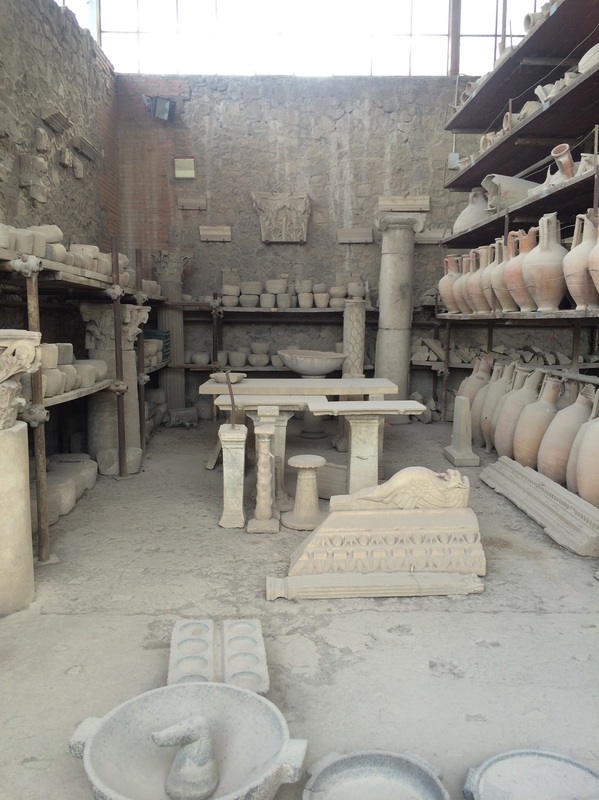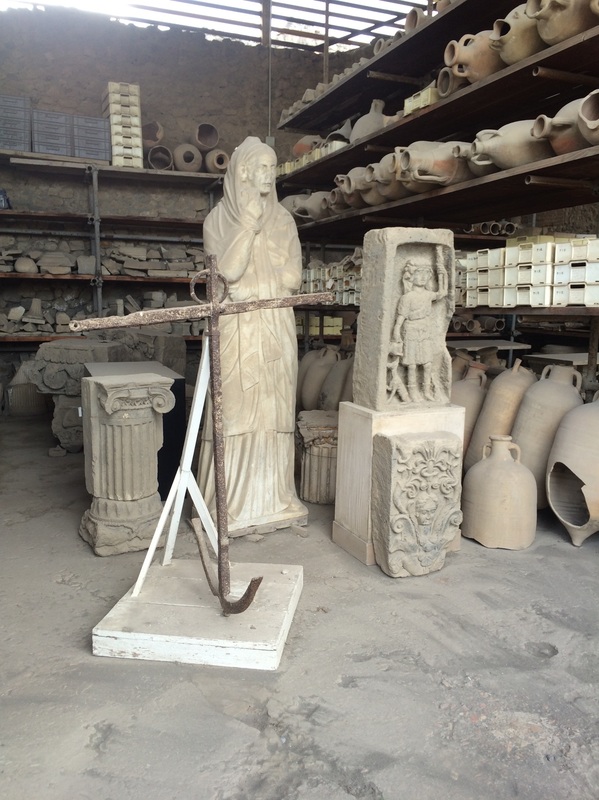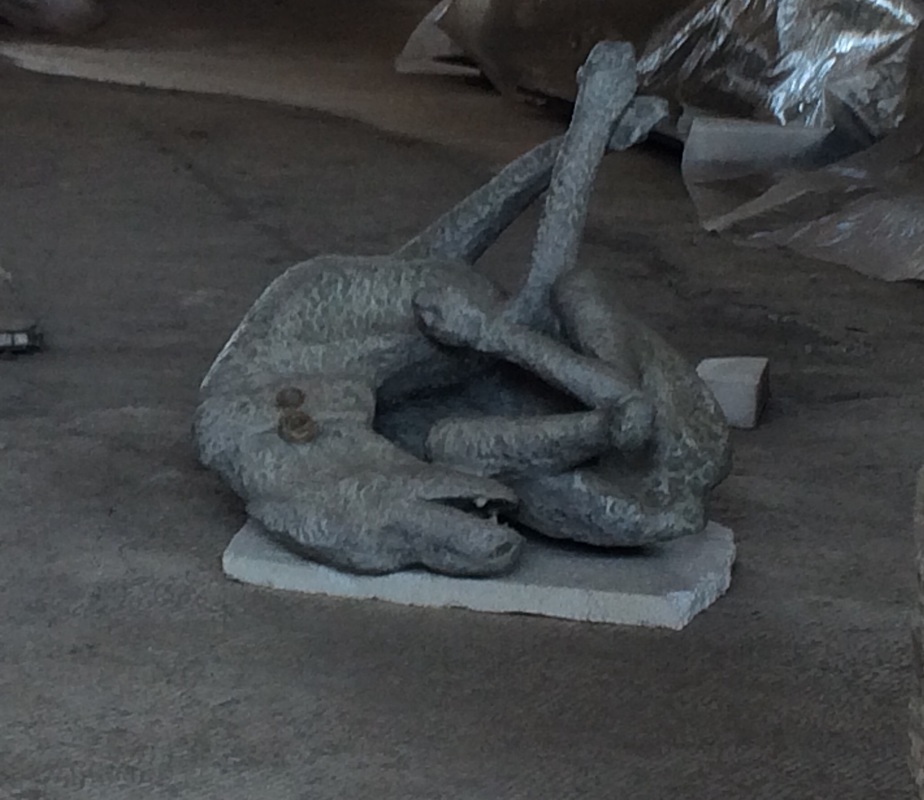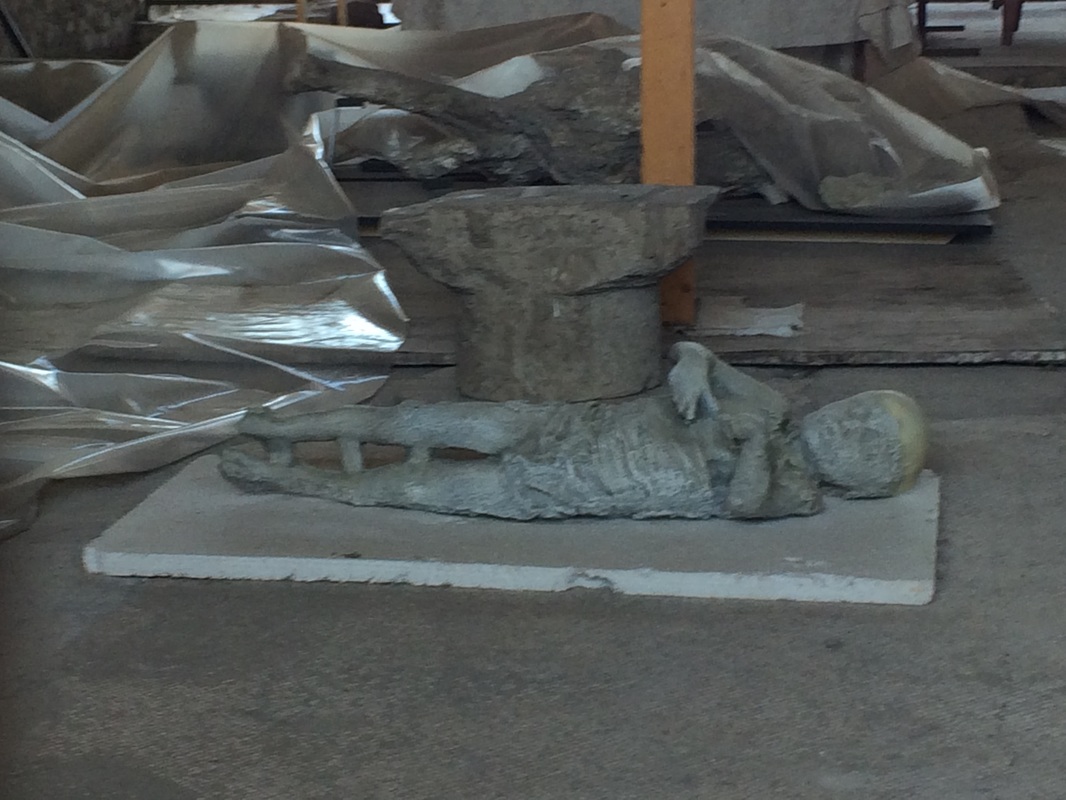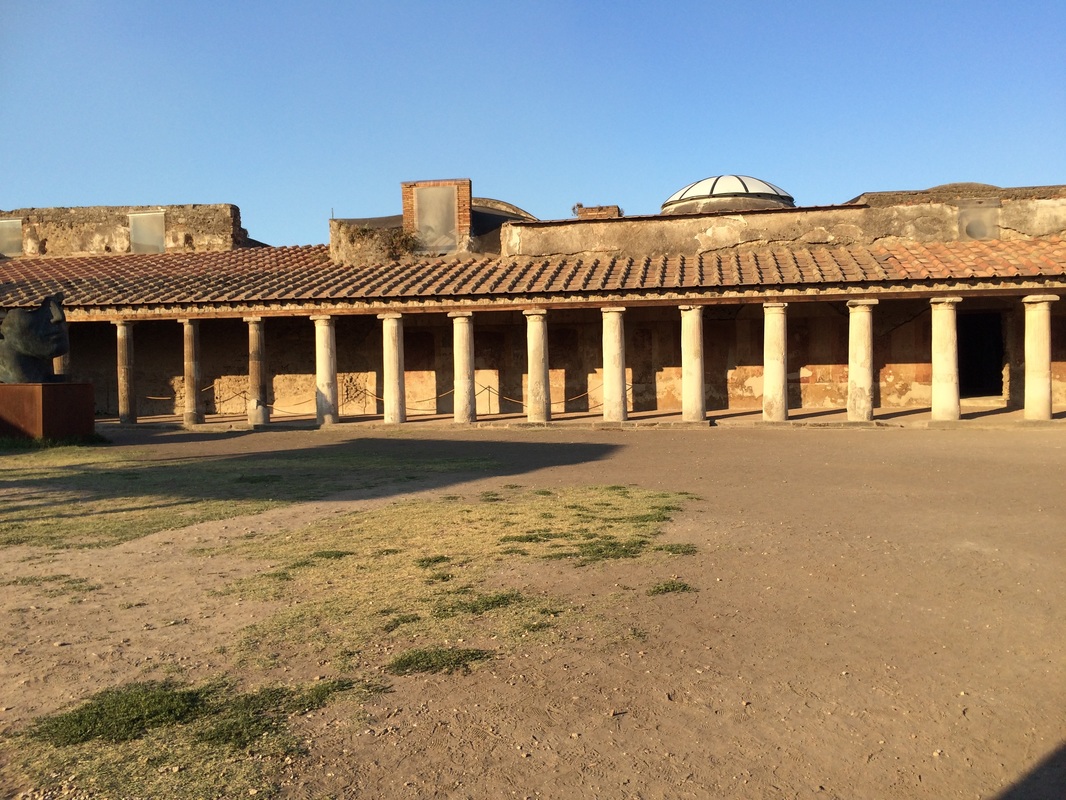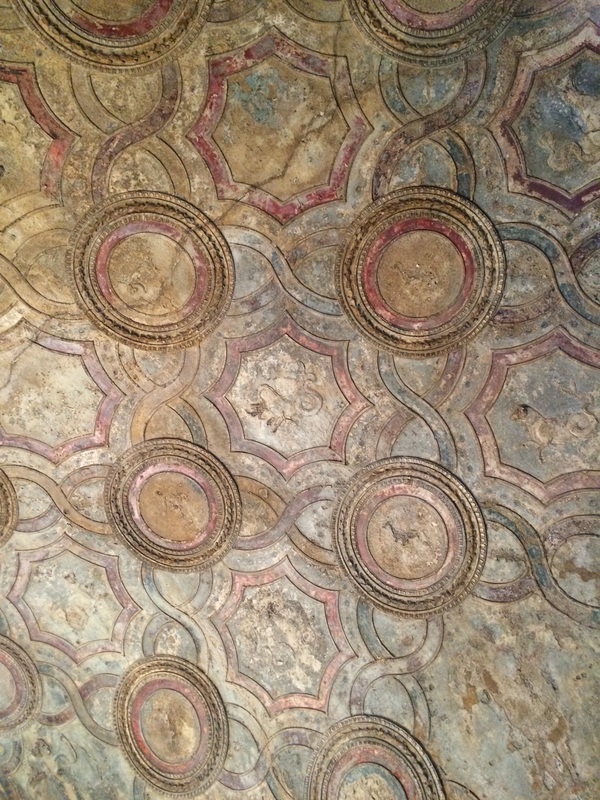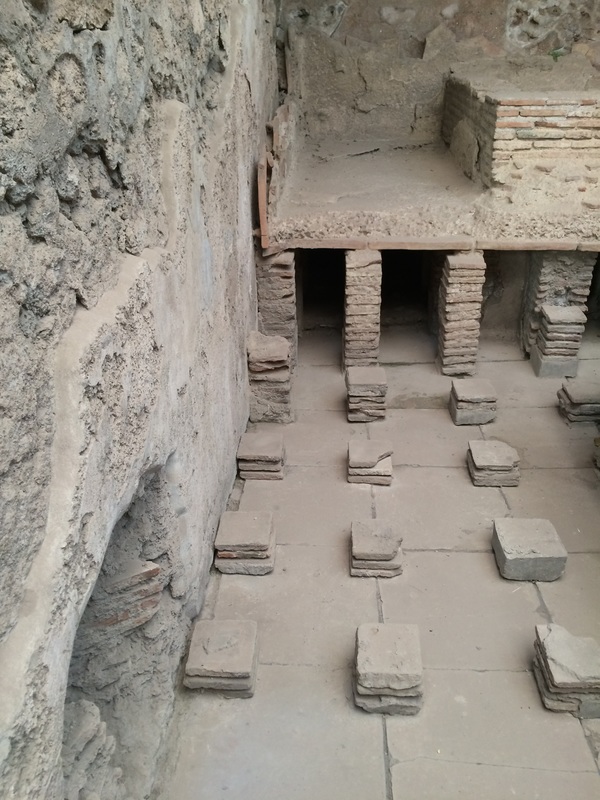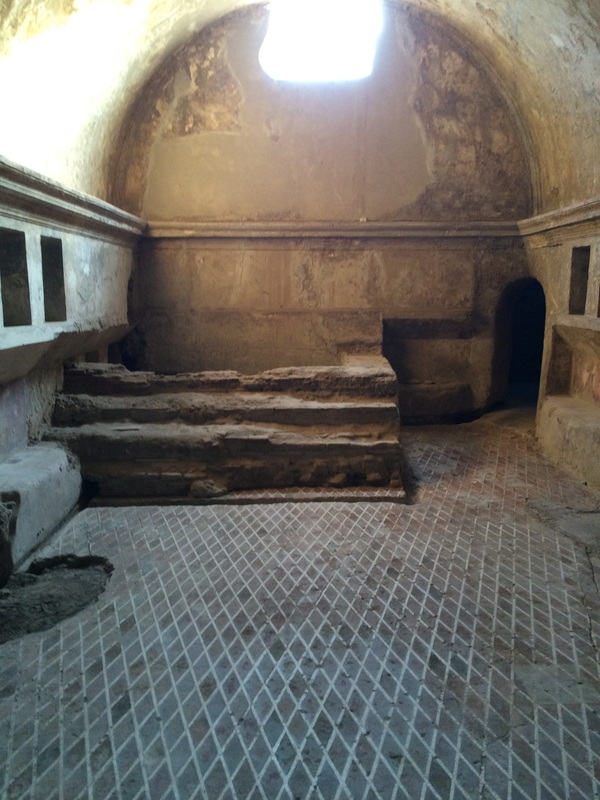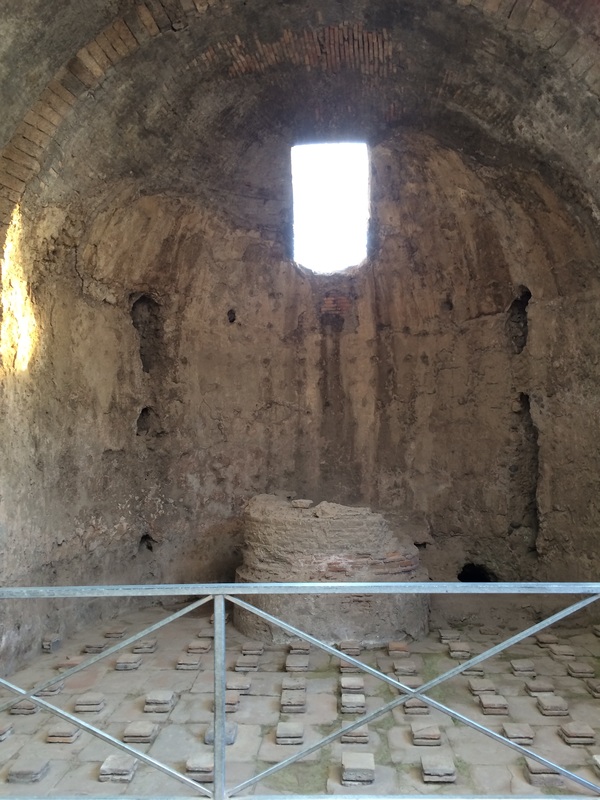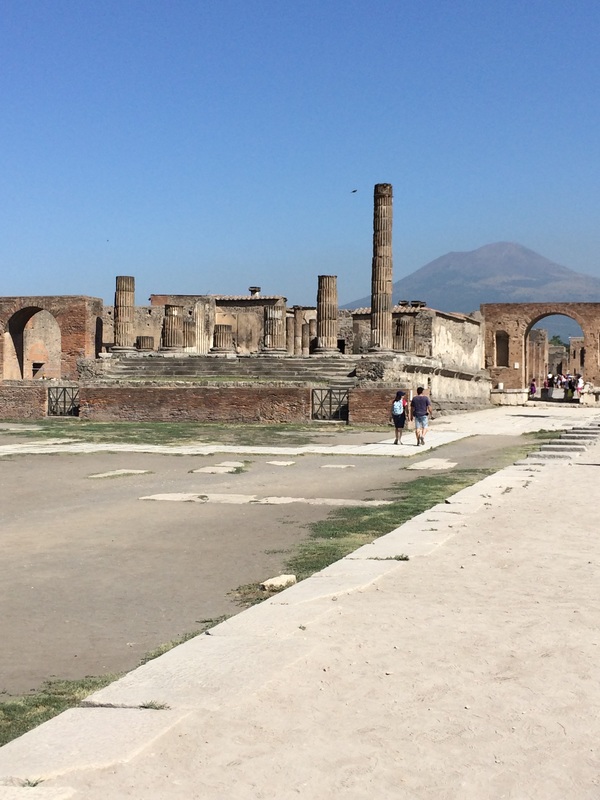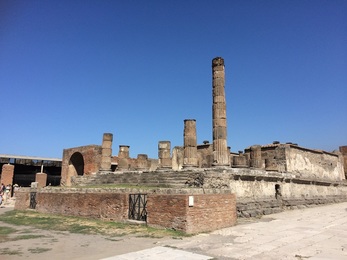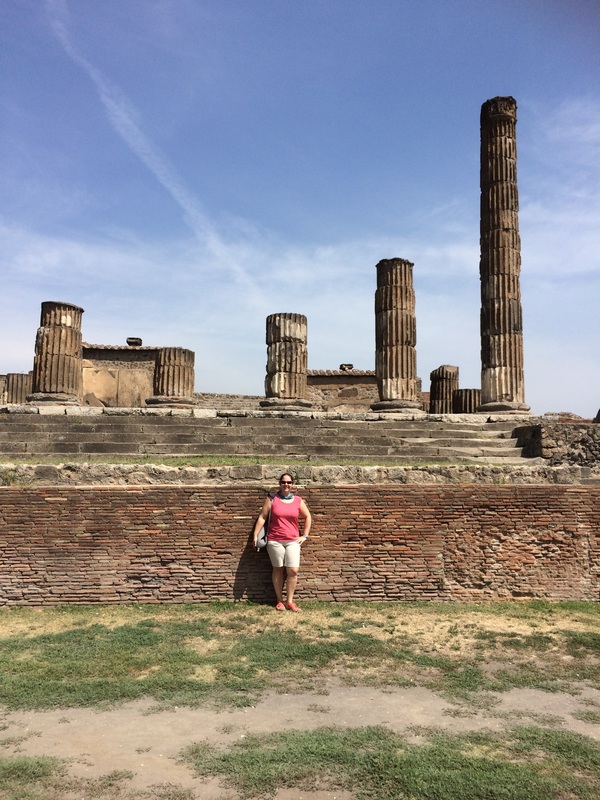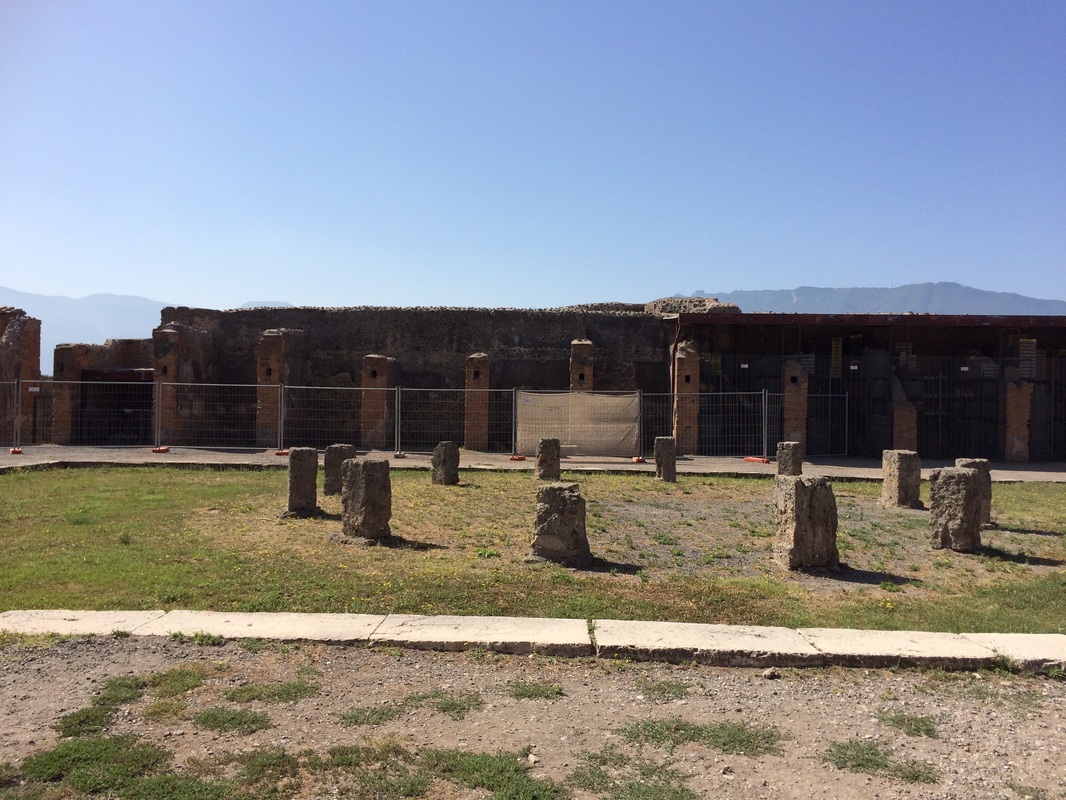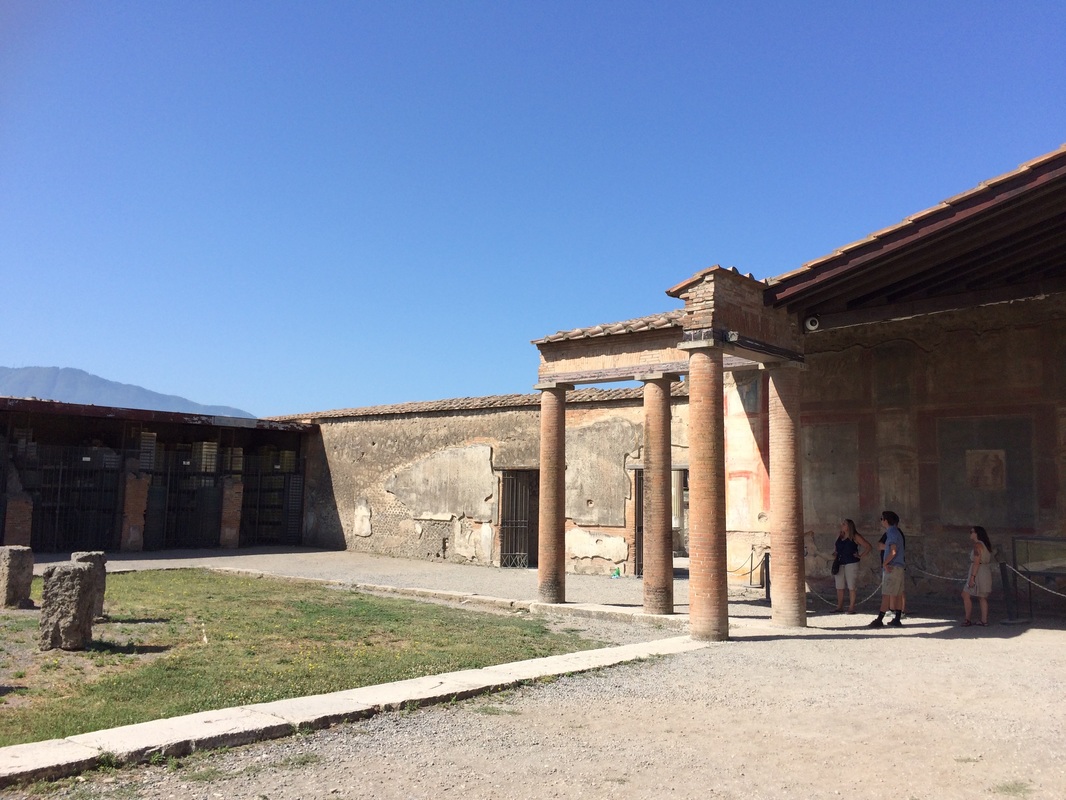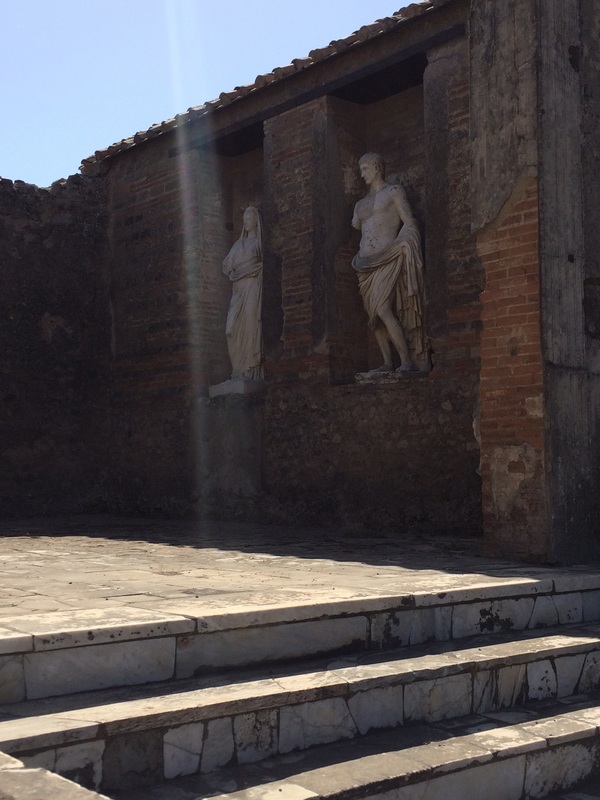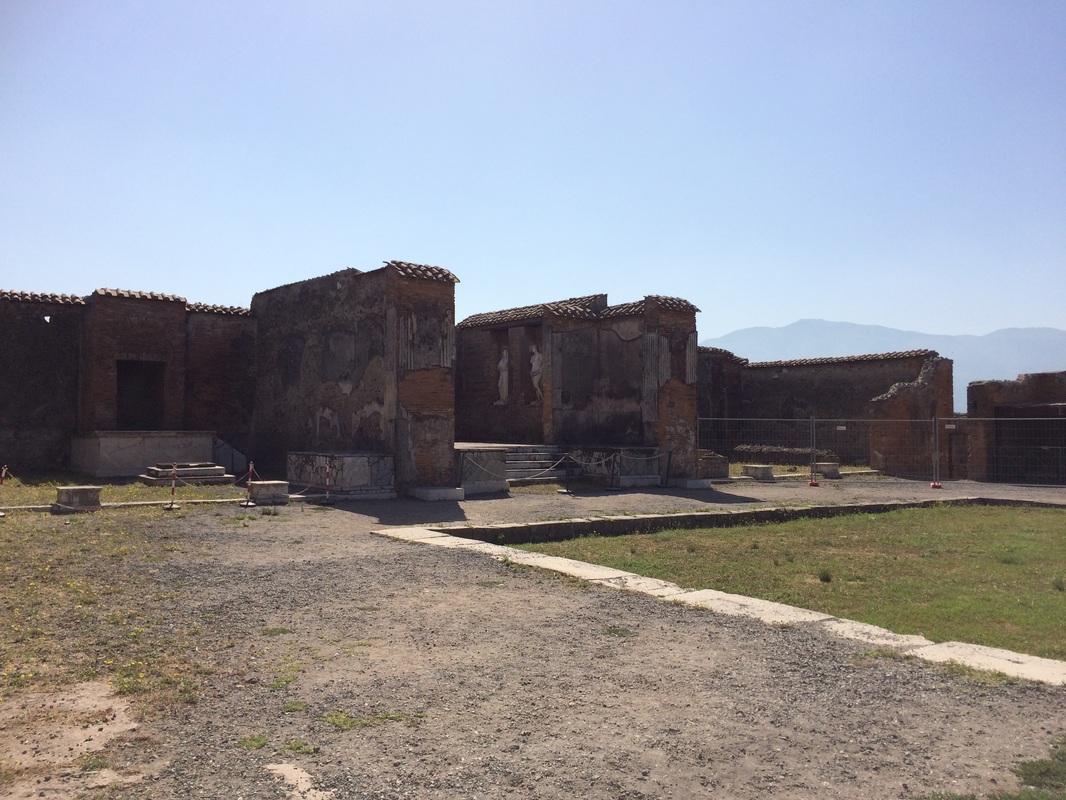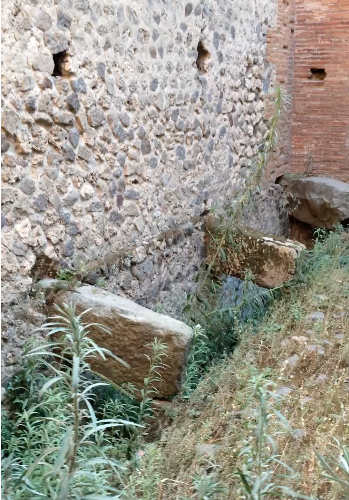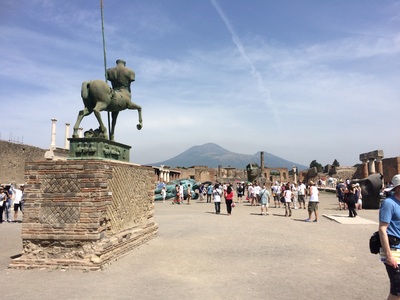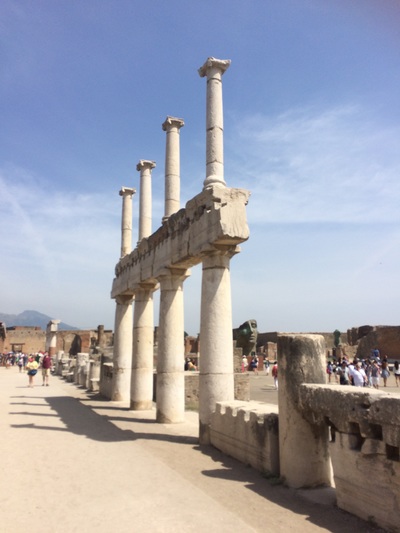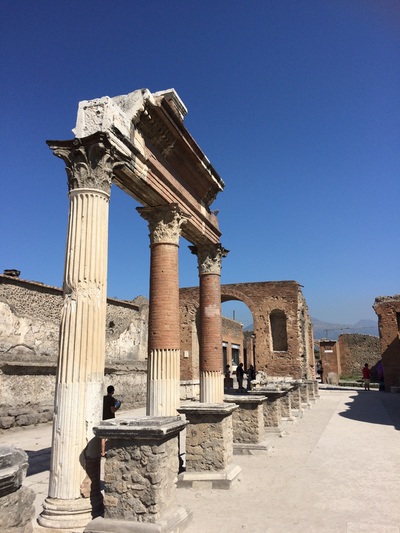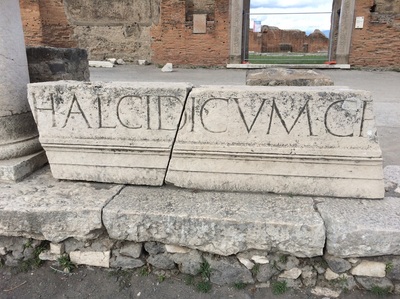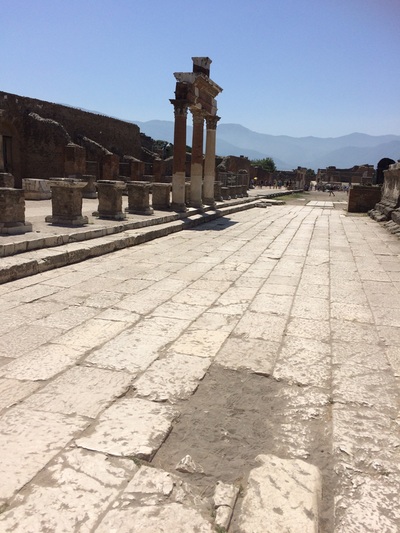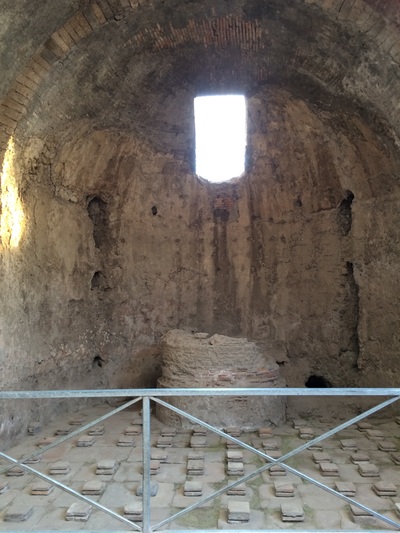Welcome to Region VII
Marina Gate and Walls
The Porta Marina or Marina Gate is one of the 7 gates of Pompeii. The entrance is on the western side of the city on a road that leads to the sea. There were a total of 12 towers along the city walls to help maintain the safety of the city. Notice the two arches at the entrance. The larger entrance was used for wagons and could be closed at night for better protection. The smaller entrance was a pedestrian entrance. Map #2
|
Sanctuary of Apollo
The temple of Apollo is just off the Marina entrance and is located by the Forum. The temple is surrounded with Corinthian columns. At the center of the image you can see the statue of Apollo, the sun god. Across from this statue would have been another bronze statue of Apollo's twin, Artemis, the goddess of the moon. Map #4
|
Mensa Ponderaria
This counter was used for measuring goods for sale. It could accommodate both solids and liquids. According to A Guide to the Pompeii Excavations, after the items were measured they would be placed into containers and sealed. This was an essential system of Roman weights and measurements. Map #6
|
Forum Granary
|
Temple of Jupiter
|
|
There were 8 sections of this building and were used for the selling of grains, fruits, and vegetables. According to A Guide to the Pompeii Excavations, over 9000 artifacts were uncovered here making it one of the most important archaeological finds in Pompeii. These include pots, pans, jars, bottles, amphorae, which were large jars for transporting oil, wine, and fish sauce. Several victims, including a dog, were found here. Map #7
Stabian Baths
These Roman baths are stunning! Upon entering the baths you walk into a large colonnaded courtyard with a swimming pool. This area was used for exercise and socializing before heading inside of the baths. The men and women had separate bath sections. In the right corner you will find the entrance for the men. Upon entering on the left side is the frigidarium, or cold room. Farther along the corridor is the apodyterium (dressing room). After a visit to the frigidarium, men would move into the tepidarium (warm room) then into the calidarium (hot room). The rooms were heated by a pipe system in the walls and floors. Hot air was heated and circulated underneath the floors. The women's section was similar to the mens, however there was no frigidarium and no lavish decor as you find in the men's area. Map #16
|
The temple of Jupiter is a the north end of the Forum. You can see Mt. Vesuvius behind the structure. This was a strategic focal point in the Forum. 3 statues: Jupiter, Juno, and Minerva were placed there resembling the Capitolium at Rome. The base of this temple was tall (almost as tall as me) so that anyone walking in the Forum could see the statues of the gods, states A Guide to the Pompeii Excavations. Map #8
MacellumWithin the Macellum there is a circular structure at the center of the grassy area which was used as a fish market. The walls of the surrounding porticoes had images of Roman daily life, images of trade and mythology. There are also two statues believed to pertain to the emperor Titus or Vespasian. Map #12
LatrineThis public latrine (restroom) was located in the Forum near the Granary. The room had a drainage channel located on 3 sides. Above this would have been seats made of wood. There were no stalls in this ancient restroom. Map #7 (Beside Forum Granary)
|
The Forum
The Forum is the most important part of a Roman city as it is where daily business took place. In addition, the Forum is a large, rectangular space that housed markets, and all of the civil, justice, and public offices were located here. Religious temples were also located in this area. The Forum was a pedestrian friendly place and wagons were not allowed. Map #5

This work is licensed under a Creative Commons Attribution-NonCommercial-NoDerivatives 4.0 International License.
Proudly powered by Weebly
